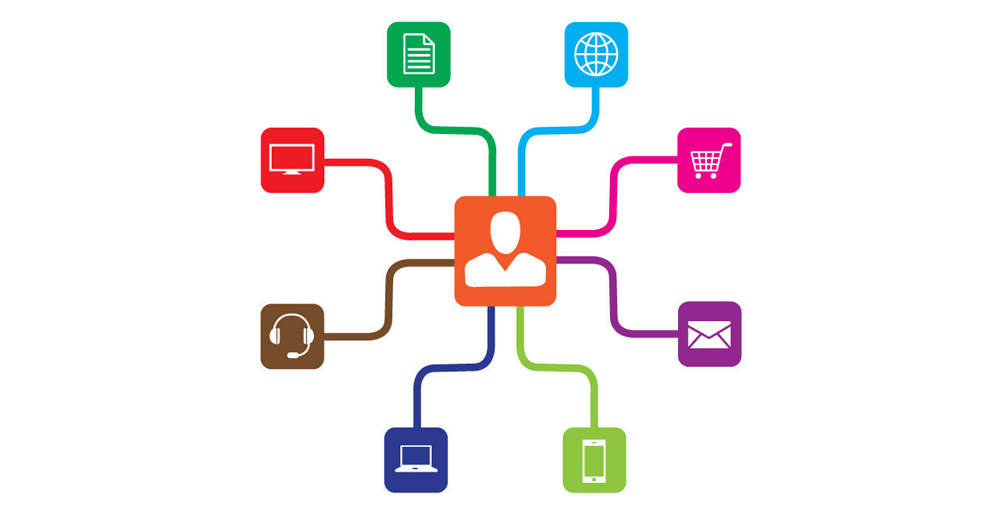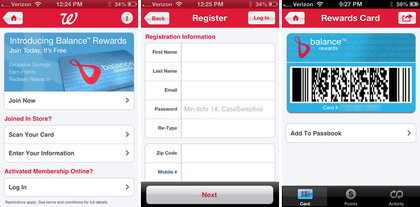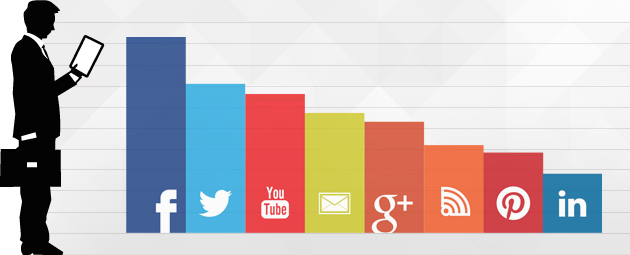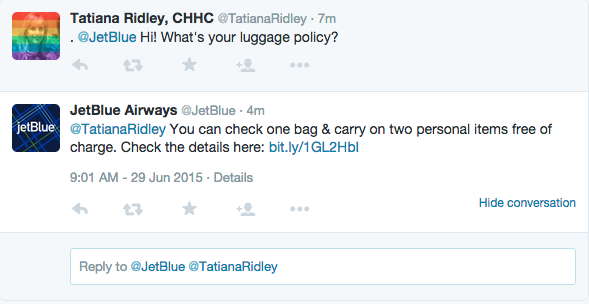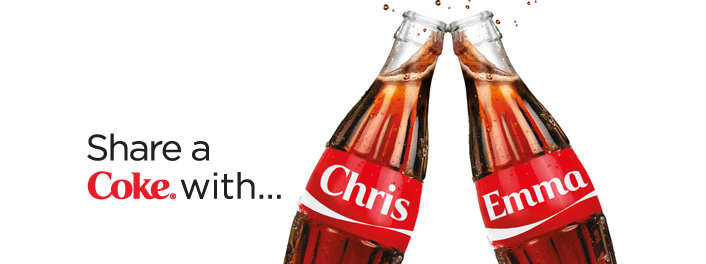Omni Channel and Personalization – Putting the Customer First
(Source)
Omni channel marketing and personalization are the peanut butter and jelly of the digital age – they were made for each other. They are also fundamentally changing business.
More than a collection of “buzzwords,” omni channel marketing and personalization reflect a significant shift in technology and consumer values. Marketers now understand that single channel marketing is no longer viable, while digital age consumers require a unique and relevant experience.
It’s also changing the corporate enterprise forever. As social norms evolve, so have the general expectations for today’s purchasing relationship. Consumers can now engage companies via a diverse set of owned communication channels, such as brick and mortar locations, websites, internet enabled products and mobile apps. Consumers can also communicate with other users through social networking and make their opinions about a brand known instantaneously. Most importantly, consumers can make a single purchase while journeying across multiple platforms.
The result? There’s a very clear value exchange between consumers and brands long before a purchase takes place. Customers know their data is valuable so if they agree to make it available then companies are expected to walk the fine line of leveraging that data, but only in a way that improves the customer’s’ life. The fact that we get these behavioral clues from customers in real-time and are expected to react with immediate relevancy is what’s causing companies to re-learn what “big data” really means.
In other words, for every aspect of an enterprise – marketers, technicians, operations, executives – it’s a whole new world. We haven’t seen a seismic shift in technology to business impact since the arrival of the internet. Just like during the Internet era, the service firms that can help an enterprise understand how to navigate through these changes and adapt will stand to benefit greatly.
So how does this new marketing paradigm for the digital age alter client decision making structures? What do these changes mean for consultancies and agencies?
As you can imagine, with great change, comes great opportunity….
Let’s take a look at what the omni channel revolution likely will mean to the future marketing service providers.
The Digital Age – A Historical Perspective
(Source)
History has proven, time and again, that technology is the best catalyst for change. The digital age and its new consumer generation are both living proof that the tech catalyst is alive and well.
It is said that the best way to predict the future is to review the past….
As we are living in the most current phase of advanced technology, it only makes sense to briefly retrace the history of its precursor in upheaval, the introduction of the internet. A brief review of how this last seismic shift in technology affected marketing service firms will help us better predict the changes to occur in the near future.
The 1990s – what exactly happened?
A war, a few political scandals, Seinfeld … and this really hard to explain thing called the World Wide Web.
Advertising firms had to adjust to new social and economic changes as baby boomers (the 1990s generation with the most purchasing power) began to age, populations began to shift and something called the internet began to allow for more freedom of choice and access to information.
When traditionally large and bureaucratic marketing agencies were slow to adjust to the new marketing paradigm of the times, there was a mass talent exodus from these firms. Small boutique firms started to pop up in regional tech hubs such as San Jose, Boulder and Seattle. Highly specialized service providers began to perform consulting activities that were traditionally reserved for the large and incumbent firms. These service providers became renowned for their responsiveness and had a solid understanding of how the technology worked and could manage execution quickly.
By the time the mid-90s arrived, the internet provided consumers with the ability to purchase goods and services from the comfort of their homes. E-commerce revolutionized the traditional view of retail, and as such, the internet advertising boom naturally followed. Click-through rates soared for the early adopters such as Hotwired and Pathfinder, and the large online goods and services providers of the time began looking for knowledgeable marketers.
Marketing services soon focused heavily on technology with service providers using new forms of communication to decentralize their teams and enhance capabilities. In the mid-2000s, marketing service providers started to develop the ability to send and receive services globally. It is at this point, with technology driven decentralization, that marketing consultants really began to provide enhanced responsiveness and value to clients.
On our timeline of events, we are now back in the digital age. The changes of the 1990s and early 2000s are returning full circle as the digital age becomes synonymous with customer value.
What should we expect?
We can expect service specialization to continue to increase, personalization to remain necessary to meet consumer needs and for marketing communication channels to continue to seamlessly integrate.
Omni Channel Role Playing – The New, The Old, The Hybrid
(Source)
Who are the individuals responsible for implementing and leading today’s omni channel revolution? Where does the obligation for value creation, personalization and seamless omni channel integration fall?
The truth is, in the face of numerous digital age challenges, traditional marketing roles are likely to continue to be difficult to define. Similar to how the rise of the internet and e-commerce in the 1990s blurred the lines between service provider and marketing agency, omni channel needs in the digital age have merged traditional roles and positions.
Let’s take a look at some the individuals likely to be tasked with omni channel implementation:
#1 Chief Information Officer (CIO)
The digital transformation has demanded that retailers reconsider how they put their product and services on the market, including the IT decisions involved. The responsibility of new technology implementation typically falls on CIOs.
However, in the digital age, there are other IT stakeholders helping drive along technology-related decision making. In this sense, the traditional tension between the chief marketing officer (CMO) and the CIO will need to be reconciled as the CMO will hold a degree of influence over IT strategies. CIOs are routinely tasked with not only having a high level of IT know-how, but with developing the transformation of technology solutions.
One of the driving forces behind the omni channel is data.
It is here that the CIO will take a more traditional technology management role. The CIO will be tasked with implementing data processes that are current and can ignite the move from transaction-centric marketing to consumer-centric marketing. Consumer personalization through data analytics and predictive analysis is the future of marketing, and the CIO will help facilitate increased value. As big data continues to play a bigger role in omni channel ROI, so will the CIO.
This position typically falls under the leadership of systems integrators and product development companies.
#2 Chief Marketing Officer (CMO)
Traditionally hailing from the realm of the marketing agency, no position has been subject to as much change in the digital age as the CMO.
With the rise of marketing proliferation (circa 2004), CMOs have had to learn how to manage rapidly changing technology, discover new sales and service touch points and perfect digital age customer segmentation. New consumer needs have also contributed to a broadening of the traditional role of the CMO. The expansion of the CMO mission in the digital age has led to high turnover rates (higher than most C-suite executives) and a short supply of viable CMO candidates.
As a result of these digital age challenges and changes, CMOs find themselves having to collaborate more with CIOs in order to design and implement effective omni channel strategies.
New media and new technology require collaboration between these two positions that traditionally co-existed with tension. Absent collaboration between the two, potentially profitable technologies could succumb to rising costs without any positive consumer impact. Collaboration in the digital age is limited not only to CIOs and CMOs. Understanding consumer needs and values in the digital age also requires teamwork between sales, marketing, manufacturing and information technology.
With these new needs have evolved new solutions, one of which is the chief omni channel officer hybrid (see below).
#3 Chief Omni Channel Officer (COCO)
What is the COCO?
The chief omni channel officer is the modern day version of the Renaissance man. The term Renaissance man is used to describe the great minds from the 14th to the 17th century. These individuals excelled in several areas of expertise in both the sciences and the arts.
Whereas in the 15th century, Leonardo da Vinci was commissioned by great rulers and kingdoms to apply his intellectual, artistic, social and physical gifts, the COCO is a position filled (both in-house and out) by companies looking for a multi-faceted marketing and management skill set.
With the traditionally distinct roles of the CIO and CMO now blurred, the COCO emerges as the perfect complement for the digital age. This is a role that is broader than the agency connected CMO, as it combines CMO/CIO influences and know-how together with client-facing activities. The COCO is positioned to have a role in not only traditional marketing decision-making, but in brick and mortar operations and digital solutions as well. This new hybrid position will provide an enhanced degree of flexibility to traditional employment structures that have a tendency to form rigid silos and prevent growth.
Firms are looking for their ideal COCO to have not only extensive digital marketing experience, but a profit and loss management skill set as well. Profit and loss management is new territory for most marketers, and this shift reflects executive desires to increase accountability for the bottom line returns associated with marketing activities. As the C-suite influences here are heavy, this position has a high probability being filled in-house via existing executives.
At the top of the list of justifications for this new hybrid position is the desire for top-level management to tie profit responsibility to creativity. This is a tall order for even the most experienced of digital marketers and is a task filled with many unknowns … yet, with unanswered questions, comes ample opportunity.
The COCO is the new client battleground for both agencies and consultancies in the digital age….
Let’s take a look at each.
The Agency vs. Consultancy Perspective
(Source)
As we are now familiar with the new client of the digital age, the COCO, let’s briefly review the traditional perspectives that service providers bring to the table and see who wins the newest marketing battleground of today.
The Agency
(Source)
A full-service/integrated agency is unique in that it has the capability of successfully driving all aspects of the marketing process. The arrival of the digital age brought with it digital technology disruption, and this disruption has manifested as a significant shift in consumer behavior.
This shift means that today’s agencies have to deliver a full-service experience: i.e., mastering strategic planning, creative production and interactive marketing implementation. While traditionally tasked with message development, agencies must now develop a fluency in big data, social media and technology optimization.
Let’s take a look at what agencies bring to the omni channel table:
- Broad View: Agencies market with a long-term mindset. They cross the t’s and dot the i’s, understanding they are doing so to reach and impact a wider target audience. This long-term point of view also allows agencies to more easily monitor goal progress and to adjust goals should they need adjusting.
- Full Service Solutions: As referenced above, agencies engage in all aspects of marketing, from research and development, to design, to concept, to copy writing. The digital age agencies typically have someone to cover every marketing need that can arise. This helps create assimilated solutions and branding in the digital age, which is essential for omni channel integration.
- Data Driven Insights: Due to experience and a diverse client base, agencies command of industry insights makes them extremely well versed on consumer needs. Agencies tend to manage large databases via their CRM or consumer engagement dealings, and this gives them a clear advantage in personalization and automation.
How about what agencies do not bring to the omni channel table:
- A Targeted Approach: While agencies may be the jack-of-all trades that businesses need to cover a wide range of topics, they often lack the specific niche approaches necessary to successfully target segmented markets in the digital age. This is especially important given the demands of today’s consumer requiring that brands know them on a more intimate level.
- Small Business Know-How: All businesses need to implement marketing strategies in the digital age, regardless if they are a local boutique or on the Fortune 500 list. It’s clear that the needs of a small boutique product/service firm will differ greatly from a large corporation. Yet, this is not always understood by large agencies, and they run the risk of not being able to provide actionable data to the small business sectors of the digital age.
The Consultancy
(Source)
Marketing consulting is really the art of professional consumer analysis. Consultancies understand what motivates consumers and how to implement specific strategies for marketing ROI. While different from agencies, they perform complementary functions that often blur the lines of division between the two (sound familiar?).
Generally, if there is a specific message that a business wants to convey, they hire an agency for access to its expansive reach, diverse know-how and data insights. If, however, a company needs expert know-how on how to expand a client base and re-invigorate the passion of current clients, they look to a consultant. These individuals will work directly with company marketers and C-suite executives to review existing business models and any potential risks associated with future scenarios.
Let’s take a look at what consultancies bring to the omni channel table:
- Specialized Expertise: When companies are in need of a niche focus that is not readily available in their company, they call on a consultant. Most consultants have a wealth of experience and are continuously educating themselves on the trends and strategies that impact their work. This high level of expertise is one of the reasons they often work with senior level executives planning and implementing strategy.
- Cost Savings: As the focus of consultancies is niche and specialized in nature, this expertise can save companies time and money. Consultants only work the hours that are necessary to accomplish the task at hand. If a business doesn’t need a full-time marketing manager for a specific engagement, consultants will allow for flexibility and precision via short-term contract hiring. Also, there is no additional cost of training.
- Creativity: Consultancies are finding success in the digital age by helping companies understand how to evolve culturally with consumers. This is the future of marketing – a rich blend of tech, niche knowledge and strategy. The ability to infuse business know-how with creativity (much like the COCO) will continue to bring value as the digital age evolves.
And now, let’s see what consultancies do not bring to the omni channel table:
- Long-Term Relationships: In a typical engagement, a consultant analyzes on a per project basis. The investment that goes into strategies and analysis will leave when the consultant leaves. While reports and reference materials are useful, the real know-how stays with the consultant. The trick is to manage consulting relationships so they continue on an ongoing basis.
- Internal Perspective: Culture is important in building all relationships, but especially in a work context. When consultants are hired, they’re expected to have all the answers, but lack an understanding of company culture and perspective. If consultants are slow to adapt, this can lead to “fast failures” and too many fast failures can tarnish a consultant’s reputation.
The Winner Is….
Who wins the good graces of the chief omni channel officer?
The reality is, it’s too soon to call.
As the digital age is still in its infancy, the lines separating agencies and consultants will only continue to blur. Consultancies are moving further into the territory of agencies, and in return agencies are responding by offering traditional consulting services. Both understand (especially agencies) that data will continue to be the key value driver for the foreseeable future.
Just like it takes a village to raise a child, it takes a collective effort to maximize marketing ROI. The trend of dissolving divisions from individual positions to hired firms is a positive trend for both agency and consulting marketers. Enhanced collaboration and sharing will continue to grant clients access to high-level tactical and strategic insight, while simultaneously aligning consumer and marketer values.
This is a winning combination for all!









